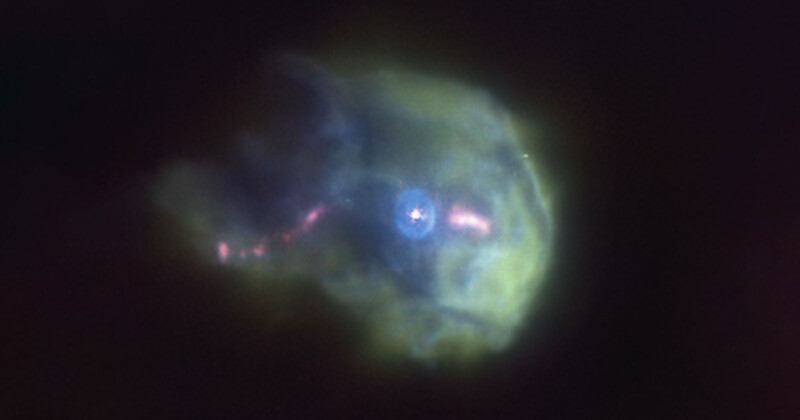Amazing Image of Young Star Shooting Out Matter Like a Garden Sprinkler

A terrestrial telescope has captured an incredible image of a young star shooting out matter like a water sprinkler 1,350 light-years from Earth.
The European Southern Observatory’s (ESO) Very Large Telescope (VLT) in north Chile captured the sharpest image ever taken of the stellar object called 244-440.
The snappily named 244-440 is a young star located in the Orion Nebula and the wiggly magenta structure is a jet of matter expelled by the star.
“Very young stars are often surrounded by discs of material falling toward the star. Some of this material can be expelled into powerful jets perpendicularly to the disc,” explains the ESO in a press release.
However, the S-shaped jet coming from 244-440 suggests that what lurks at the center of this object isn’t one but two stars orbiting each other.
This orbital motion periodically changes the orientation of the jet, similar to a water sprinkler. Another possibility is that the strong radiation from the other stars in the Orion cloud could be altering the shape of the jet.
The image was taken on the Multi Unit Spectroscopic Explorer (MUSE) instrument at ESO’s VLT and was presented in a new paper led by Andrew Kirwan from Maynooth University in Ireland.
The red, green, and blue colors visible in the image represent the distribution of iron, nitrogen, and oxygen respectively. However, that is just a tiny fraction of the data gathered by MUSE which actually takes thousands of images of different colors and wavelengths simultaneously. The incredible imaging technology allows scientists to study the distribution of different chemical elements and how they move.
MUSE is also equipped with advanced optics technology that corrects for the blurring effects of Earth’s atmosphere, without it images of astronomical objects would be blurred.
Despite being on Earth, its advanced technology allows MUSE to deliver images that are sharper than NASA’s Hubble Space Telescope.
The new photo of 244-440 is the sharpest image ever of the celestial object offering valuable insight to astronomers on how stars are born in massive stellar nurseries like Orion.
Image credits: ESO/Kirwan et al.